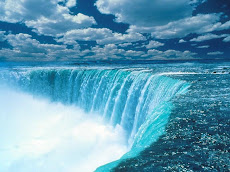Agra (pronounced [ɑːɣrə] (help·info)) (Hindi: आगरा, Urdu: آگرا) is a city on the banks of the Yamuna River in the northern state of Uttar Pradesh, India. It finds mention in the ep ic Mahabharata when it was called Agrabana, or Paradise. Ptolemy, the famous 2nd century geographer, marked it on his map of the world as Agra. Tradition and legend ascribe the present city of Raja Badal Singh (around 1475) whose Fort, Badalgarh, Stood on or near the site of the present Fort. However, the 12th century Persian poet Salman writes of a desperate assault on the fortress of Agra, then held by one King Jaipal, by Sultan Mahmud of Ghazni.[1] It was ruled by Sultan Sikandar Lodi in the year 1506. It achieved fame as the capital of the Mughal emperors from 1526 to 1658 and remains a major tourist destination because of its many splendid Mughal-era buildings, most notably the Taj Mahal, Agra Fort and Fatehpur Sikri, all three of which are UNESCO World Heritage Sites.
ic Mahabharata when it was called Agrabana, or Paradise. Ptolemy, the famous 2nd century geographer, marked it on his map of the world as Agra. Tradition and legend ascribe the present city of Raja Badal Singh (around 1475) whose Fort, Badalgarh, Stood on or near the site of the present Fort. However, the 12th century Persian poet Salman writes of a desperate assault on the fortress of Agra, then held by one King Jaipal, by Sultan Mahmud of Ghazni.[1] It was ruled by Sultan Sikandar Lodi in the year 1506. It achieved fame as the capital of the Mughal emperors from 1526 to 1658 and remains a major tourist destination because of its many splendid Mughal-era buildings, most notably the Taj Mahal, Agra Fort and Fatehpur Sikri, all three of which are UNESCO World Heritage Sites.
Getting In
By Air
Agra Airport at Kheria is around 6 KM from the city centre, but is not very well connected. Indira Gandhi International Airport, Delhi is the best option. Agra is very well connected to Delhi both by Rail and Road.
By Rail
Agra is on the main train line between Delhi (Station Code : NDLS) and Mumbai (Bombay) (Station Code : CSTM) and between Delhi and Chennai (Station Code : MAS)
The luxury train - Palace on Wheels also stops at Agra on its eight day round trip of tourist destinations in Rajasthan and Agra.
By Road
Idgah Bus Stand is the biggest Bus Stand in Agra and is connected to most of the bigger cities in North India.
Climate:
Agra, located on the Indo-Gangetic plain has a continental sub-tropical climate, with long, hot summers from April to S eptember when temperatures can reach as high as 45°C (113°F). During summers dry winds (loo) blow in this region. The monsoon months from July to September see about 67 cm (27 inches) of rainfall annually. Winters last from November to February, with day time temperatures comfortably warm, but temperatures below freezing are not uncommon during the night. Agra is also prone to dense fog during the winter month of December & January.
eptember when temperatures can reach as high as 45°C (113°F). During summers dry winds (loo) blow in this region. The monsoon months from July to September see about 67 cm (27 inches) of rainfall annually. Winters last from November to February, with day time temperatures comfortably warm, but temperatures below freezing are not uncommon during the night. Agra is also prone to dense fog during the winter month of December & January.
A major tourist destination, Agra is best visited in the months of October and November, and February and March, when the average temperatures are between 16-25°C (60-75°F) The monsoon season should be avoided by non-Indians due to the risk of disease and flooding, the months of April to June due to the extreme heat. The months of December and January are to be avoided due to the dense fog and often freezing temperatures, especially since much of the city has no heating system.
Taj Mahal
Agra's Taj Mahal is one of the most famous buildings in the world, the mausoleum of Shah Jahan's favorite wife, Mumtaz Mahal. It is one of the New 7 Wonders of the world, and one of three World Heritage Sites in Agra, the others being Agra Fort and Fatehpur Sikri.
Completed in 1653 CE., the Taj Mahal is believed to have been built by the Mughal Badshah (king) Shah Jahan as the final resting place for his beloved wife, Mumtaz. Finished in marble, it is perhaps India's most fascinating and beautiful monument. This perfectly symmetrical monument took 22 years (1630-1652) of hard labour and 20,000 wor kers, masons and jewellers to build and is set amidst landscaped gardens. Built by the Persian architect, Ustad Isa, the Taj Mahal is on the bank of the Yamuna River. It can be observed like a mirage from the Agra Fort from where Emperor Shah Jahan stared at it, for the last eight years his life as a prisoner of his son Aurangzeb. It is a masterpiece of symmetry, seeming to be floating in the air from a distance, and each revealed as an illusion experienced as one enters through the main gate. Verses of the Holy Koran are inscribed on it and at the top of gate 22 small domes, signifying the number of years the monument took to build. The Taj Mahal was built on a marble platform that stands above a sandstone one. The most elegant dome of the Taj, with a diameter of 60 feet (18 m), rises 80 feet (24 m) over the building and directly under the dome is the tomb of Mumtaz Mahal. Shah Jahan's tomb was erected next to hers by his son Aurangzeb. Fantastic inlay works using semi-precious stones decorate the interiors.
kers, masons and jewellers to build and is set amidst landscaped gardens. Built by the Persian architect, Ustad Isa, the Taj Mahal is on the bank of the Yamuna River. It can be observed like a mirage from the Agra Fort from where Emperor Shah Jahan stared at it, for the last eight years his life as a prisoner of his son Aurangzeb. It is a masterpiece of symmetry, seeming to be floating in the air from a distance, and each revealed as an illusion experienced as one enters through the main gate. Verses of the Holy Koran are inscribed on it and at the top of gate 22 small domes, signifying the number of years the monument took to build. The Taj Mahal was built on a marble platform that stands above a sandstone one. The most elegant dome of the Taj, with a diameter of 60 feet (18 m), rises 80 feet (24 m) over the building and directly under the dome is the tomb of Mumtaz Mahal. Shah Jahan's tomb was erected next to hers by his son Aurangzeb. Fantastic inlay works using semi-precious stones decorate the interiors.
Opening Times: 6 A.M. to 7.30 P.M. (closed Fridays)
The 'Itmad-Ul-Daulah at Agra'
Empress Nur Jehan built Itmad-Ud-Daulah's Tomb, sometimes called the Baby Taj, for her father, Ghias-ud-Din Beg, the Chief Minister of Emperor Jahangir. Located on the left bank of the Yamuna river, the mausoleum is set in a large cruciform garden criss-crossed by water cours es and walkways. The mausoleum itself is set on a base about 50 meters square and about 1 meter high. The mausoleum is about 23 meters square. On each corner are hexagonal towers, about 13 meters tall. Small in comparison to many other Mughal-era tombs, it is sometimes described as a jewel box. Its garden layout and use of white marble, pietra dura, inlay designs and latticework presage many elements of the Taj Mahal.
es and walkways. The mausoleum itself is set on a base about 50 meters square and about 1 meter high. The mausoleum is about 23 meters square. On each corner are hexagonal towers, about 13 meters tall. Small in comparison to many other Mughal-era tombs, it is sometimes described as a jewel box. Its garden layout and use of white marble, pietra dura, inlay designs and latticework presage many elements of the Taj Mahal.
The walls are white marble from Rajasthan encrusted with semi-precious stone decorations - cornelian, jasper, lapis lazuli, onyx, and topaz in images of cypress trees and wine bottles, or more elaborate decorations like cut fruit or vases containing bouquets. Light to the interior passes through delicate jali screens of intricately carved white marble.
Agra Fort
Another world heritage site in Agra. Agra's dominant structure , the Agra Fort (sometimes called the Red Fort), was built by Akbar in 1565. Be Noted that a Stone Plate located at the Gate of Fort describes it to be built before 1000 and later renovated by Akbar. The red sandstone fort was renovated and converted into a palace during Shah Jahan's time, and reworked extensively with marble and pietra dura inlay. Notable buildings in the fort include the Pearl Mosque, the Diwan-e-Am and Diwan-e-Khas (halls of public and private audience), Jehangir's Palace, Khaas Mahal, Sheesh Mahal (mirrored palace), and Musamman Burj.
, the Agra Fort (sometimes called the Red Fort), was built by Akbar in 1565. Be Noted that a Stone Plate located at the Gate of Fort describes it to be built before 1000 and later renovated by Akbar. The red sandstone fort was renovated and converted into a palace during Shah Jahan's time, and reworked extensively with marble and pietra dura inlay. Notable buildings in the fort include the Pearl Mosque, the Diwan-e-Am and Diwan-e-Khas (halls of public and private audience), Jehangir's Palace, Khaas Mahal, Sheesh Mahal (mirrored palace), and Musamman Burj.
The great Mughal Emperor Akbar commissioned the construction of the Agra Fort in 1565 CE., although additions were made till the time of his grandson Shah Jahan. The forbidding exteriors of this fort hide an inner paradise. The fort is crescent shaped, flattened on the east with a long, nearly straight wall facing the river. It has a total perimeter of 2.4 k.m., and is ringed by double castellated ramparts of red sandstone punctuated at regular intervals by bastions. A 9 mt. wide and 10 mt. deep moat surround the outer wall.
Akbar's Tomb, Sikandra
Sikandra, the last resting place of the Mughal Emperor Akbar the Great, is on Delhi-Agra Highway, is only 13 kilometres from the Agra Fort. Akbar's tomb reflects the completeness of his personality. The vast, beautifully carved, red-ochre sandstone tomb with deers, rabbits and langoor monkeys is set amidst a lush garden. Akbar himself planned his own tomb and selected a suitable site for it. To construct a tomb in one's lifetime was a Tartary custom which the Mughals followed religiously. Akbar's son Jahangir completed the construction of this pyramidal tomb in 1613.
Jama Masjid
Jami Masjid Mosque is a very simple mosque of red sandstone wit h little white marble decoration and blue colour paint wall and ceilings. It’s a huge mosque in the center of Agra surrounded by a great bazaar. The mosque was completely empty of any tourist, only one man praying and the little children at the Madrasa (Koran school). The Mosque Stands on a high plinth approached by stairs, and with five arched entrances to the courtyard, the mosque is crowned by three large sandstone domes distinguished by their zigzag bands of marble. It has well-balanced proportions and a courtyard surrounded by cloisters on three of its sides and the prayer chamber on its western side. Jami Masjid is beautifully decorated with paintings, inlaid stones, carvings and glazed tiles. The building comprises of pillared Dalan, a beautiful 'Chhajja' and the 'Chhatri' on the roof. The main Iwan of the building is rather simple and contains a central arch with geometrical designs.
h little white marble decoration and blue colour paint wall and ceilings. It’s a huge mosque in the center of Agra surrounded by a great bazaar. The mosque was completely empty of any tourist, only one man praying and the little children at the Madrasa (Koran school). The Mosque Stands on a high plinth approached by stairs, and with five arched entrances to the courtyard, the mosque is crowned by three large sandstone domes distinguished by their zigzag bands of marble. It has well-balanced proportions and a courtyard surrounded by cloisters on three of its sides and the prayer chamber on its western side. Jami Masjid is beautifully decorated with paintings, inlaid stones, carvings and glazed tiles. The building comprises of pillared Dalan, a beautiful 'Chhajja' and the 'Chhatri' on the roof. The main Iwan of the building is rather simple and contains a central arch with geometrical designs.
National Chambal (Gharial) Wildlife Sanctuary
The National Chambal (Gharial) Wildlife Sanctuary in India was founded in 1979 and is part of a large area co-administered by the states of Rajasthan, Madhya Pradesh and Uttar Pradesh, within an area of 5,400 s quare kilometres along the Chambal River. Approximately 400 km of the river is within the reserve, forming the core area. Apart from the Ganges River Dolphin (Platanista gangetica), the other inhabitants of the sanctuary include magar (crocodile) and gharial (Gavialis gangeticus). Stretch of crystal clear water also supports Marsh Crocodile, Smooth-coated Otters (Lutrogale perspicillata), 6 species of Terrapins/Turtles plus 250 species of birds. Migratory birds from Siberia forms its rich avian fauna.One of the rare bird present here is Indian Skimmers. Black-bellied Terns, Red-crested Pochard and Ferruginous Pochard, Bar-headed Goose, Sarus Crane, Great Thick-knee, Indian Courser, Pallas's Fish Eagle, Pallid Harrier, Greater Flamingos and Lesser Flamingos, Darters, and Brown Hawk Owl and many other birds are part of the sanctuary's rich fauna.The sanctuary is protected under India's Wildlife Protection Act 1972.
quare kilometres along the Chambal River. Approximately 400 km of the river is within the reserve, forming the core area. Apart from the Ganges River Dolphin (Platanista gangetica), the other inhabitants of the sanctuary include magar (crocodile) and gharial (Gavialis gangeticus). Stretch of crystal clear water also supports Marsh Crocodile, Smooth-coated Otters (Lutrogale perspicillata), 6 species of Terrapins/Turtles plus 250 species of birds. Migratory birds from Siberia forms its rich avian fauna.One of the rare bird present here is Indian Skimmers. Black-bellied Terns, Red-crested Pochard and Ferruginous Pochard, Bar-headed Goose, Sarus Crane, Great Thick-knee, Indian Courser, Pallas's Fish Eagle, Pallid Harrier, Greater Flamingos and Lesser Flamingos, Darters, and Brown Hawk Owl and many other birds are part of the sanctuary's rich fauna.The sanctuary is protected under India's Wildlife Protection Act 1972.
Food & Cuisine
Agra is known for its traditional Mughlai cuisine. A traveler can find a number of eating-places across the city, depending on his budget. One can choose from makeshift restaurants in the Taj Ganj area to the luxury hotels in Agra, which are famous for their Mughlai dishes. Agra is famous for its local specialty, the peitha, which is sweet candied pumpkin. It has many options for restaurants and bars. All the luxury hotels has their own restaurants, an you can try other restaurants like Petals, Only, Metro bar etc.

Hotels In Agra
Hotel Jaypee Palace Agra
Hotel Mughal Sheraton Agra
Hotel Taj View Agra
Hotel Amarvilas Agra
Hotel Holiday Inn Agra
Hotel Howard Park Plaza Agra




 e limited to 10 participants. View the little penguins waddle ashore from a secluded beach location. Moderate fitness is required as the 2km walk to the secluded beach locataion will be in the dark over rocky/sandy ground with a climb of 20+ stairs.
e limited to 10 participants. View the little penguins waddle ashore from a secluded beach location. Moderate fitness is required as the 2km walk to the secluded beach locataion will be in the dark over rocky/sandy ground with a climb of 20+ stairs. y - Jul: Nest Building
y - Jul: Nest Building






 utiful forest." It is a virgin forest which until recently owed nothing to human endeavour and yet nature has laid it out with as much care as a planned pleasure ground. For miles and miles, the lofty treetops form an unbroken canopy, while nearer the ground, works of high and ebb-tide marked on the soil and tree trunks and the many varieties of the natural mangrove forest have much to offer to an inquisitive visitor.
utiful forest." It is a virgin forest which until recently owed nothing to human endeavour and yet nature has laid it out with as much care as a planned pleasure ground. For miles and miles, the lofty treetops form an unbroken canopy, while nearer the ground, works of high and ebb-tide marked on the soil and tree trunks and the many varieties of the natural mangrove forest have much to offer to an inquisitive visitor. natural surrounding. Thousands of meandering streams, creeks, rivers and estuaries have enhanced its charm. Sundarbans meaning beautiful forest is the natural habitat of the world famous Royal Bengal Tiger, spotted deer, crocodiles, jungle fowl, wild boar, lizards, rhesus monkey and an innumerable variety of beautiful birds. Migratory flock of siberian ducks flying over thousands of sail boats loaded with timber, gopatta (round-leaf), fuel wood, honey, shell and fish further add to the serene natural beauty of the Sundarbans.
natural surrounding. Thousands of meandering streams, creeks, rivers and estuaries have enhanced its charm. Sundarbans meaning beautiful forest is the natural habitat of the world famous Royal Bengal Tiger, spotted deer, crocodiles, jungle fowl, wild boar, lizards, rhesus monkey and an innumerable variety of beautiful birds. Migratory flock of siberian ducks flying over thousands of sail boats loaded with timber, gopatta (round-leaf), fuel wood, honey, shell and fish further add to the serene natural beauty of the Sundarbans.

 months (April-May) and it is interesting to see how they locate a hive and then collect honey.
months (April-May) and it is interesting to see how they locate a hive and then collect honey.





